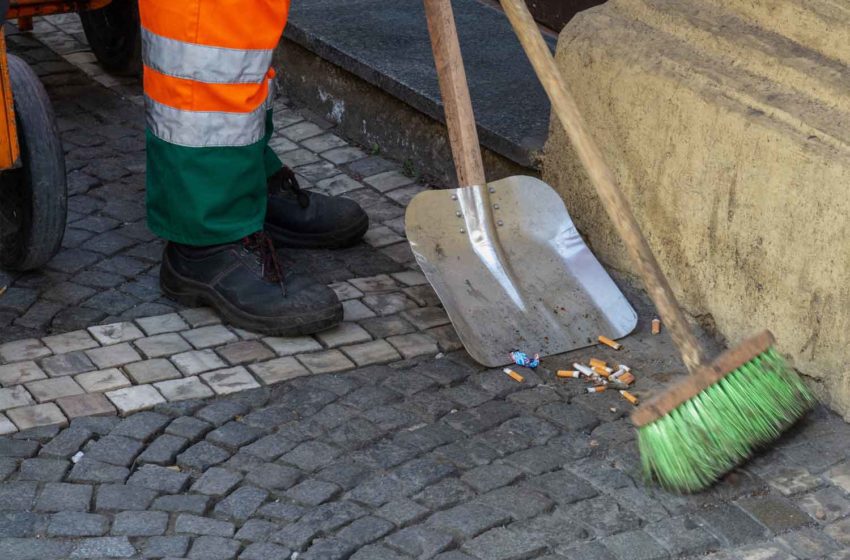Coming Clean
- Also in TR Filters Print Edition Sustainability
- June 1, 2022
- 0
- 8 minutes read


Stakeholders debate the challenges presented by cigarette litter.
By Stefanie Rossel
Cigarette butts are the most littered item on earth. The World Health Organization estimates that two-thirds of all smoked cigarettes are discarded into the environment. For 2021 when consumers smoked 5.21 trillion cigarettes, according to Euromonitor International, this corresponds to approximately 3.47 trillion littered cigarette butts.
Made of cellulose acetate (CA), a polymer that is slow to degrade in the environment, cigarette filters take up to 18 years to disintegrate. In addition, used cigarette filters are full of toxins, such as nicotine, formaldehyde, arsenic and ammonia, which can leach into the ground and damage living organisms that come into contact with them.
With regulatory pressure on single-use plastic (SUP) consumer goods increasing globally, tobacco companies hence face a new challenge: In a world where CA is still considered the gold standard for filters as far as smoking chemistry is concerned, they will have to find a way to make their products more sustainable. During a webinar staged in late April by Schweitzer-Mauduit International (SWM) and Essentra Filters, participants explored this and other challenges relating to cigarette filters.

Shane MacGuill, head of nicotine and cannabis at Euromonitor, said environmental sustainability was a double-edged sword for the tobacco industry, presenting both threat and opportunity and driven by a potent combination of consumer, investor and regulatory demand. According to his company’s research, 66 percent of consumers try to have a positive impact on the climate through day-to-day actions whereas 46 percent expect to be more worried about climate change in the future.
MacGuill predicted that more investors will look at sustainability in tobacco; presently, around 40 percent of MSCI ESG (environmental, social and governance) indexes exclude tobacco. Between 2016 and 2018, he noted a 30 percent compound annual growth rate of ESG integration.
In the tobacco and nicotine industries, product waste is one of the key drivers of sustainability legislation. The EU’s SUP Directive, introduced in 2021, emerged from a desire by European regulators to significantly reduce waste from cigarette butts by 2030.
It places extended producer responsibility (EPR), a reinforced application of “the polluter pays” principle, on cigarette manufacturers to mitigate the impact of discarded cigarette butts. The regulation, MacGuill pointed out, was likely to be replicated in other regions.
Supply chain integrity is another factor driving sustainability regulation; leaf cultivation is linked to environmental impacts such as deforestation, lack of crop diversity, chemical use and water utilization. Highlighted in the WHO’s 2017 report, these issues will likely attract increased scrutiny, MacGuill forecast.
The most environmentally damaging stage of the cigarette production process is manufacturing and supply, for which legislation thus far has been limited. MacGuill noted that major tobacco companies have significantly stepped up self-regulation and focused on reducing their carbon and energy use, aiming, for instance, to achieve net-zero carbon emissions from their value chains by 2050. Product waste ambitions, however, currently remain largely limited to packaging.
Increasing Awareness

As end users, smokers play an important role in promoting sustainable cigarette consumption. A survey in Canada, Brazil, Germany, South Korea and France commissioned by SWM and Essentra Filters found that smokers generally are interested in sustainability, but only half of them know that filters contain plastic. Plastic content was overestimated in Germany while South Koreans underestimated it. Half of the smokers had a correct perception of the time needed for a plastic filter to decompose whereas South Koreans tended to overestimate it. According to the survey, filters were mostly dispensed in the trash or ashtrays in the countries investigated. Most smokers said they were willing to accept changes in the visual appearance of filters with accelerated biodegradability features. “There is a great opportunity for the industry to change tobacco products’ perception and their impact on the environment,” said Alice Jaussaud, product manager for filtering media solutions at SWM.

Hugo Azinheira, global innovation and marketing director at Essentra Filters, compared the biodegradability of various existing filters. In recent years, the industry has focused its R&D efforts on developing filters made of sustainable alternative materials. The sustainable filters used in the comparison, Azinheira said, were biodegradable while at the same time offering similar levels of performance and filtration as traditional materials.
Carried out according to ISO 14855-1, a protocol to evaluate biodegradability of plastics under controlled composting conditions, the test compared biodegradation to reference cellulose after 105 days. While 100 percent of the reference cellulose had decomposed after this period, only 8.7 percent of CA had disintegrated. The latter item was the only one still visible at the end of the test. The four samples made of alternative material all reached a biodegradation above 90 percent after 105 days.
Stricter Rules to Come

Regulation trends in the EU and beyond indicate that there is a strong political will on sustainability issues, said Frederique Martinache, product compliance senior specialist at SWM. Since 2014, the U.N. Environmental Assembly (UNEA) has been calling on states to address the environmental impact of marine plastic litter and pollution of SUP products. Regulatory approaches include imposing SUP bans, implementing taxes and/or economic incentives for sustainable alternatives, introducing EPR schemes and setting product standards and labeling requirements.
In March 2022, UNEA member states agreed to propose by 2024 a legally binding treaty to end plastic pollution on land and in the water. Cigarette butts are the most common plastic litter on beaches. They represent a major hazard for marine life as animals can ingest the trash, exposing them to harmful chemicals. These can also make their way up through the food chain, threatening human health on a global scale.
To promote the development of regulatory strategies that specifically address the impact of cigarettes on human health and the environment, the U.N. Environment Program has launched the Clean Seas campaign in which it partners with the Secretariat of the WHO Framework Convention on Tobacco Control (FCTC). Article 18 of the FCTC addresses protection of the environment and the health of persons in relation to the environment. This year’s WHO World No Tobacco Day focused on the adverse impact of tobacco cultivation and cigarette production and use on the environment, encouraging regulators to step up legislation, including implementing and strengthening existing schemes to make producers responsible for the environmental and economic costs of dealing with tobacco waste products.
In the EU, tobacco filters have been required since July 2021 to bear labels informing consumers about the presence of plastic in the products, means of inappropriate waste disposal and the negative impact of littering. By Jan. 5, member states must have set up EPR schemes to fund litter cleanup initiatives, awareness campaigns and data gathering and reporting projects. Innovation and product development to provide viable alternatives to filters containing plastics are encouraged. By July 3, 2027, the European Commission shall propose binding measures to reduce the post-consumption waste of plastic filters.
For the time being, the greatest regulatory pressure on filters comes from the EU and Norway, which has also implemented the SUP directive. But other jurisdictions are mulling measures as well. The U.K. Department for Environment, Food and Rural Affairs, for example, is considering the adoption of an EPR scheme. In the U.S., the Break Free from Plastic Pollution Act of 2021 intends to phase out throwaway plastics made from fossil fuel, hold the plastic industry responsible for its waste and pause construction on any new plastic-making plants. Apart from this federal legislation, there are a number of state initiatives. While Canada is contemplating regulation, the Australian government in 2021 launched the National Plastics Plan, which calls for an industry-led cross-sectoral stewardship taskforce to reduce cigarette butt litter in Australia.

